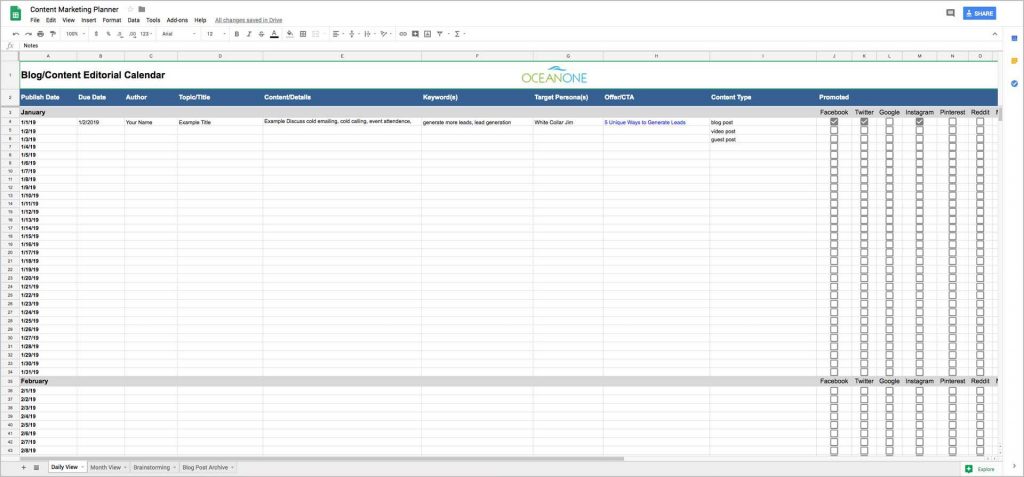
Marketing for Manufacturers: Our Top 40 Marketing Tactics for Manufacturers
In today’s competitive landscape, effective marketing is crucial for driving growth, attracting new customers, and maintaining a strong presence in the industry. When marketing for manufacturers of any size these marketing tactics for will provide you with actionable strategies to enhance your marketing efforts and stand out from the crowd.
From leveraging digital marketing channels to building strong partnerships and optimizing your online presence, these tips cover a wide range of marketing techniques designed to help you reach your target audience, showcase your manufacturing capabilities, and drive business success. You’ll discover the importance of understanding your target market, creating compelling content, utilizing social media platforms, and maximizing search engine visibility.

We’ll explore the significance of providing exceptional customer service, leveraging industry expertise, and staying up to date with the latest manufacturing trends. You’ll also find guidance on building a strong brand, utilizing visual content, harnessing the power of online reviews, and making data-driven decisions. Whether you’re a marketing novice or a seasoned professional, these tactical tips will provide you with valuable insights and strategies to elevate your marketing efforts and thrive in the competitive manufacturing industry.
Here’s our list of 40 marketing tactics for manufacturing businesses…
- Clearly define your target market: Understand the specific industries, sectors, or customer segments that are most likely to benefit from your manufactured products or solutions.
- Develop a strong value proposition: Clearly communicate the unique value and benefits your manufacturing business offers to customers. Highlight how your products or services solve their pain points or address their needs. Even if you already have a strong UVP (Unique Value Proposition , it should be reviewed and possibly revised to change with the times. Read our “4 Steps To A Powerful Value Proposition…”
- Leverage content marketing: Create informative and valuable content related to your industry or products. This could include blog posts, whitepapers, videos, or tutorials that establish your expertise and attract potential customers.
- Showcase your expertise: Position yourself as an industry expert by speaking at conferences, participating in industry events, or publishing thought leadership articles. This helps build credibility and trust in your manufacturing business.
- Utilize social media: Identify the social media platforms where your target audience is active and engage with them regularly. Share industry news, product updates, behind-the-scenes content, and interact with followers.
- Make sure your website is top notch: A user-friendly website that showcases your manufacturing capabilities, product catalog, case studies, and contact information is a must. Trends change quickly and a website that was cutting edge 5 years ago may be embarrassing today. Stay on top of it.
- Optimize for local search: If your manufacturing business has a physical location, optimize your online presence for local search. Claim your business on Google My Business, list accurate contact details, and encourage customers to leave reviews.
- Implement search engine optimization (SEO): Optimize your website and content with relevant keywords, meta tags, and descriptions to improve your organic search rankings. Consider hiring an SEO expert if needed.
- Leverage online directories: List your manufacturing business on relevant online directories and industry-specific platforms. This increases your online visibility and makes it easier for potential customers to find you. Here’s a list of 12 directories to get listed on.
- Develop customer case studies: Highlight successful projects or partnerships with clients and leverage case studies. Showcase the specific challenges you helped solve and the positive outcomes achieved.
- Provide exceptional customer service: Strive to exceed customer expectations by offering prompt communication, addressing concerns or issues promptly, and maintaining a strong focus on customer satisfaction.
- Network with industry peers: Attend industry conferences, trade shows, and events to network with potential customers, suppliers, and industry experts. Build relationships and explore collaboration opportunities.
- Offer product demonstrations: If feasible, provide hands-on product demonstrations to potential customers. This allows them to experience the quality and functionality of your manufacturing offerings firsthand. During the pandemic, many companies developed in-house product demonstration studios with full video streaming capabilities so they could deliver live demos via Zoom or similar. Companies that we spoke to found it so effective that they still use this approach because it works so well and it cuts down on travel time.
- Emphasize quality and reliability: Highlight the quality standards, certifications, or industry-specific compliance your manufacturing business adheres to. Position yourself as a reliable and trustworthy provider. Spread the word across all marketing channels.
- Leverage online advertising: Consider using online advertising channels such as Google Ads, social media advertising, or industry-specific platforms to reach a wider audience and generate leads.
- Implement email marketing: Build an email list of interested prospects and customers, and regularly send them targeted newsletters, product updates, and special offers to stay top of mind.
- Build strategic partnerships: Collaborate with complementary businesses, suppliers, or distributors to expand your reach and tap into new markets. Seek mutually beneficial partnerships that can drive growth.
- Monitor industry trends: Stay informed about the latest trends, innovations, and market demands in the manufacturing sector. Adapt your offerings and marketing strategies accordingly to stay competitive.
- Attend trade shows and exhibitions: Participate in relevant trade shows and exhibitions to showcase your manufacturing capabilities and network with potential customers and partners.
- Use video marketing: Create engaging videos that showcase your manufacturing processes, product demonstrations, customer testimonials, or company culture. Share these videos on your website and social media platforms.
- Offer incentives or referral programs: Encourage satisfied customers to refer new clients by offering incentives, discounts, or rewards. Word-of-mouth referrals can be powerful in the manufacturing industry. Check out buyapowa.com for lots of great referral ideas.
- Leverage online reviews and testimonials: Encourage satisfied customers to leave reviews and testimonials on platforms like Google, industry-specific directories, and social media. Positive reviews and testimonials can build trust and credibility for your manufacturing business.
- Invest in visual content: Use high-quality images, infographics, and product videos to showcase your manufacturing capabilities and products. Visual content can capture attention and convey information effectively.
- Provide educational resources: Develop guides, e-books, or webinars that educate your target audience about industry trends, best practices, or product applications. Position your manufacturing business as a knowledgeable resource.
- Monitor and analyze data: Use analytics tools to track website traffic, user behavior, and marketing campaign performance. Analyzing data helps you make data-driven decisions and optimize your marketing strategies for better results.
- Offer personalized experiences: Tailor your marketing messages and offerings to specific customer segments or industries. Personalization enhances engagement and makes customers feel valued.
- Build a strong brand: Invest in developing a compelling brand identity that reflects your manufacturing business’s values, mission, and unique selling propositions. Consistently communicate your brand message across all marketing channels.
- Collaborate with influencers: Identify influential individuals or industry experts who can endorse your manufacturing business. Engage in influencer marketing collaborations to reach a wider audience and gain credibility.
- Provide exceptional after-sales support: Offer comprehensive post-purchase support, including warranty information, technical assistance, and customer service. A positive post-sales experience can lead to repeat business and referrals.
- Stay updated with technology: Embrace technological advancements in the manufacturing industry and leverage them to streamline processes, improve efficiency, and offer innovative solutions to customers. Consider a custom chatbot to handle initial support requests.
- Conduct market research: Regularly conduct market research to understand evolving customer needs, industry trends, and competitors’ strategies. This information helps you refine your marketing approach and stay ahead of the curve.
- Leverage customer feedback and UGC: Actively seek feedback from customers to identify areas for improvement and gather testimonials for marketing purposes. User generated content (UGC) where customers post video about how they used your products and give feedback on camera can be tremendously effective. This feedback loop helps you enhance your offerings and customer experience.
- Offer product customization: If feasible, provide options for customization or personalized solutions based on customer requirements. Customization can differentiate your manufacturing business and cater to specific client needs.
- Engage in thought leadership: Publish industry-related articles, insights, or research papers to establish your manufacturing business as a thought leader. This positions you as an authoritative voice in your field.
- Engage with industry associations: Join relevant industry associations like NAM another and actively participate in their events and initiatives. This allows you to network with peers, share knowledge, and gain industry recognition.
- Embrace sustainability: Highlight your manufacturing business’s commitment to sustainability and environmentally friendly practices. Communicate initiatives such as waste reduction, energy efficiency, or responsible sourcing.
- Offer competitive pricing and incentives: Stay competitive by pricing your products or services competitively. Consider offering special discounts, incentives, or loyalty programs to attract and retain customers.
- Stay active on industry forums and online communities: Engage in relevant industry forums, discussion boards, and online communities where your target audience participates. Share valuable insights and establish your presence as an industry expert.
- Stay compliant with regulations: Ensure your manufacturing business complies with industry regulations, safety standards, and certifications. Communicate your commitment to compliance to build trust with customers.
- Continuously evaluate and optimize your marketing efforts: Regularly review your marketing strategies, analyze results, and make necessary adjustments to optimize your campaigns for maximum effectiveness.
Marketing for Manufacturers: A note about content marketing and SEO
Content marketing and SEO are pivotal long-term strategies that play a crucial role in establishing a strong online presence and cultivating authority within your niche. In today’s digital landscape, where competition is fierce and consumer behavior is heavily influenced by online information, these strategies have become essential for businesses aiming to thrive and remain relevant over time.
We have heard feedback from several customers who basically say, “We’re a manufacturing company, not a publishing company.” We get it. It does seem daunting and it can take a long time to see results. However, that’s we are and building authority within your niche is not only about securing high rankings on search engines but also about becoming a trusted source of valuable information for your target audience.
The foundation of building authority lies in consistently producing high-quality, informative, and relevant content. By creating a wealth of content around topics related to your industry, products, and services, you position your company as an expert and resource. This authoritative content not only educates your audience but also establishes your brand’s credibility and fosters trust.
Whether you’re selling B2B or catering to consumers, sharing valuable insights through your content will naturally attract attention from other websites, leading to valuable backlinks.
These links act as endorsements from external sources, signaling to search engines that your content is valuable and reputable. Consequently, your online authority grows, boosting your search engine rankings and making your content more discoverable to a wider audience.
Through a well-executed content marketing strategy, combined with effective SEO practices, businesses can create a lasting impact, continually attracting organic traffic and solidifying their position as a respected industry leader.
Marketing for Manufacturers: Content Strategy
Creating a well-structured content strategy that integrates a comprehensive range of topics and keywords into a thoughtfully designed content calendar is a key step in maximizing the benefits of content marketing and SEO. This strategic approach ensures that your content creation efforts are purposeful, organized, and aligned with your overarching goals.
Start by identifying the most relevant and high-impact keywords within your niche. These keywords should reflect the interests, needs, and search queries of your target audience. Once you have your list of keywords, match them with corresponding topics that provide value and insights. Each topic should serve a specific purpose, such as educating your audience, addressing common pain points, or showcasing your expertise.
With your list of topics and keywords in hand, it’s time to create a content calendar. This calendar will serve as a roadmap for your content creation efforts, helping you distribute topics evenly and avoid duplication. Assign each topic to a specific date, ensuring a diverse mix of content types such as how-to guides, informative articles, case studies, and more. This diversity keeps your audience engaged and caters to different preferences.
By systematically populating your content calendar with well-matched topics and keywords, you’ll create a coherent and valuable resource for your audience while reinforcing your authority in your niche. Moreover, this organized approach streamlines your content creation process and enables you to track your progress and measure the effectiveness of your strategy. As you consistently produce and publish content according to your calendar, you’ll witness the cumulative impact of increased online authority, improved search engine rankings, and a growing, engaged audience
Here’s a example for a hardwood flooring manufacturer.
| Date | Blog Post Title | Keyword |
|---|---|---|
| Nov 1 | The Ultimate Guide to Hardwood Flooring Types | Hardwood flooring types |
| Nov 2 | Choosing the Best Hardwood Flooring for Your Home | Best hardwood flooring |
| Nov 3 | DIY Hardwood Flooring Installation Tips | DIY hardwood flooring |
| Nov 4 | Hardwood vs. Laminate: Which is Right for You? | Hardwood vs laminate |
| Nov 5 | The Beauty of Engineered Hardwood Floors | Engineered hardwood |
| Nov 6 | Pros and Cons of Prefinished Hardwood Flooring | Prefinished hardwood |
| Nov 7 | How to Clean and Maintain Your Hardwood Floors | Hardwood floor cleaning |
| Nov 8 | Enhance Your Home with Exotic Hardwood Flooring | Exotic hardwood flooring |
| Nov 9 | Hardwood Flooring Trends for Modern Interiors | Hardwood flooring trends |
| Nov 10 | The Environmental Benefits of Hardwood Flooring | Environmental benefits |
| Nov 11 | The Timeless Elegance of Oak Hardwood Flooring | Oak hardwood flooring |
| Nov 12 | Hardwood Flooring for High-Traffic Areas | High-traffic areas |
| Nov 13 | The Warmth and Comfort of Maple Hardwood Flooring | Maple hardwood flooring |
| Nov 14 | Hardwood Flooring Maintenance Dos and Don’ts | Maintenance tips |
| Nov 15 | Exploring Dark Stain Options for Hardwood Floors | Dark stain hardwood |
| Nov 16 | Enhancing Your Space with Light Wood Flooring | Light wood flooring |
| Nov 17 | Hardwood Flooring in Kitchen: Pros and Cons | Hardwood in kitchen |
| Nov 18 | All About Parquet: A Unique Hardwood Flooring | Parquet flooring |
| Nov 19 | Hardwood Flooring for Cozy Bedroom Ambiance | Bedroom hardwood |
| Nov 20 | The Art of Mixing Hardwood Flooring in Home Decor | Mixing hardwood floors |
| Nov 21 | Hardwood Flooring and Pets: Tips for Harmony | Hardwood and pets |
| Nov 22 | The Aesthetic Appeal of Wide Plank Hardwood | Wide plank hardwood |
| Nov 23 | Hardwood Flooring Maintenance for Longevity | Flooring longevity |
| Nov 24 | Incorporating Hardwood Flooring in Open Spaces | Hardwood in open spaces |
| Nov 25 | Reclaimed Hardwood: History and Sustainability | Reclaimed hardwood |
| Nov 26 | Hardwood Flooring for Rustic Interior Design | Rustic interior design |
| Nov 27 | Hardwood Flooring Finishes: Glossy vs. Matte | Glossy vs matte finish |
| Nov 28 | Enhance Your Home Office with Hardwood Flooring | Home office flooring |
| Nov 29 | Hardwood Flooring for Classic Home Styles | Classic home styles |
| Nov 30 | The Future of Hardwood Flooring: Innovations | Future of hardwood |
The example above would obviously be a very aggressive approach and for many companies, producing a quality blog post every day would not be sustainable. The fact is, you can go at any pace you want to. You could do one piece of content each month, it’s just going to take longer to see results.
We hope you find these marketing tips for manufacturers useful and feel free to ask any questions. If you need some specific advice on marketing strategy, book a call for a free strategy consultation.






